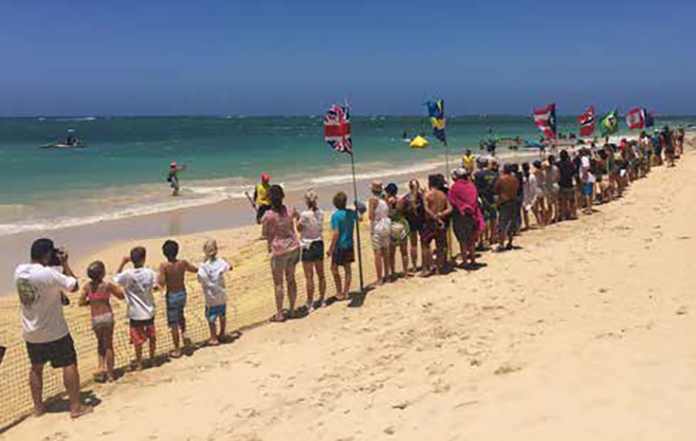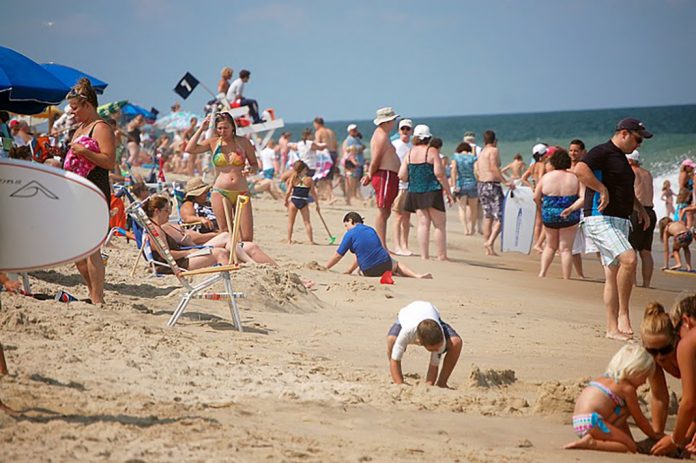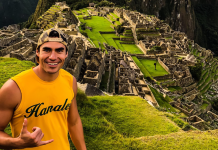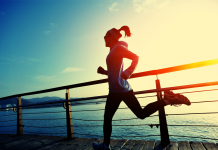When the conditions are right, you can often see a thin layer of oil along the surface of the ocean shore at densely populated beaches like Waikiki and Hanauma Bay, associated with the heavy application of sunscreen. There is tremendous health benefit to protect our skin from sun damage which can lead to skin cancer, but this multi-billion dollar industry generates thousands of sunscreen products on the market making it even more difficult for consumers to choose a safe option that offers maximum sun protection.
Similar to food labels, it is important to be an educated consumer. There is a lot to know about sun-screen, so being informed about ingredients, UV protection, water resistance and proper application will provide you with the tools to take better advantage of this skin protection preventive strategy. The skin is the largest organ of the body, so it is a valuable health pursuit to take care of this important protective barrier which also radiates outward beauty.
A broad spectrum sunscreen is important because there are two types of ultraviolet rays emitted from the sun: UV-A and UV-B. UV-B rays are short wavelengths that hit the top of our skin contributing to our sun tan or sun burn. UV-A rays are long wave-lengths that penetrates more deeply and is responsible for the premature aging of skin. Both UV-A and UV-B rays contribute to skin cancer. UV-A protection is not required in the US and if a sunscreen is not labeled “Broad Spectrum” then you are probably not getting sufficient UV-A protection.
There is a big difference between chemical and mineral sunscreens. Chemical sunscreen often contain compounds such as oxybenzone, isobutene, octinoxate, homosalate, octisalate and octocrylene. Chemical sunscreens need to be applied 30 minutes before use because they need time to soak into the skin before they are effective. No single chemical ingredient offers both UV-A & UV-B protection. Of these chemical compounds, the sunscreen industry relies heavily on oxybenzone as an active ingredient in many sunscreen products which is a known hormone disruptor and allergen. Also of concern is a synthetic form of Vitamin A called retinyl palmitate which can cause harm to the skin. Animal studies have shown more skin tumors in animals treated with this ingredient following sun exposure. Mineral sunscreens such as zinc oxide and titanium dioxide do not absorb into the skin, are effective immediately after application, reflect UV rays, are generally less irritating to sensitive skin, and provide protection against both UV-A and U-VB rays.
 SPF (Sun Protection Factor) is a calculation of UV-B protection. SPF values can be misleading because the scale is not linear. For instance, SPF 30 blocks 97% of UV-B rays while SPF 50 only pro-vides an additional 1% of sun protection. Because most consumers select sunscreen based on their SPF, they can be misled into thinking that higher SPF ratings offer significantly greater UV skin protection which unfortunately is not the case.
SPF (Sun Protection Factor) is a calculation of UV-B protection. SPF values can be misleading because the scale is not linear. For instance, SPF 30 blocks 97% of UV-B rays while SPF 50 only pro-vides an additional 1% of sun protection. Because most consumers select sunscreen based on their SPF, they can be misled into thinking that higher SPF ratings offer significantly greater UV skin protection which unfortunately is not the case.
“Water Resistant” is an FDA regulated claim and companies require product testing in order to add this to their label. There are two levels of water resistance: 40 minutes (“Water Resistant”) and 80 minutes (“Very Water Resistant”). All water resistant sunscreens should still be reapplied after swimming, sweating and towel-drying.
Two tablespoons is generally the amount of sun-screen required to adequately cover the entire adult body. Most people only apply a quarter to half of this required amount. A little does not go a long way when it comes to sunscreen. A half application of the recommended amount of sunscreen only provides the square root of the SPF. For example, a half application of SPF 30 gives an effective SPF of only 5.5!
Sunscreen sprays are very popular with consumers because of their convenience, but there is concern that they may pose an inhalation risk and may not provide a thick or even coating on the skin, making this application method less effective and potentially more harmful. Sunscreen sprays are not intended to be sprayed directly onto the face, which is a mis-take that can be commonly witnessed when at the beach with family and friends.
As stewards of our environment, we need to be aware of the environmental impact that our sun-screens are having on our planet and marine ecosystems. Every year, 14,000 tons of sunscreen is released into our oceans which has a major impact on our reef systems. The chemicals in sunscreen rob these living organisms from access to vital nutrients leading to the bleaching of our coral, the greatest documented culprit being oxybenzone. The term “reef safe” often used on labels is unregulated and most testing is per-formed on fish and not coral. Our ocean is a vastly important natural resource for our islands and we need to be aware of the man-made stressors that we place on our environment.

Similar to organic produce, a safe and high quality sunscreen is more than likely going to cost you a few extra bucks, but this is a good investment in both your health and the health of our environment. Unfortunately, most of sunscreen options available at big-box retailers are laden with chemicals, the cost of convenience and savings.
The Environmental Working Group is a non-prof-it organization that has investigated more than 750 commercial sunscreen products and scores them on a scale of 1-10 with 10 being the most hazardous to human health. To see how your sunscreen stands up to EWGs ratings, visit their website at www.ewg.org and type the name of your product into the search option.
Dr. Opunui is naturopathic doctor at Manakai O Malama, Hawaii’s largest integrative medicine clinic. Naturopathic medicine is a form of medicine that works with nature to restore health. Dr. Opunui takes all major private health insurance plans and on July 1st, 2016 became the first naturopathic doc-tor to become credentialed by HMSA as a participating provider. Dr. Opunui is an ocean enthusiast, outrigger paddler, Ironman triathlete and proud Native Hawaiian with the passion of empowering health in his community.
Landon Opunui, ND Integrative Medicine Specialist Manakai O Malama
932 Ward Ave #600
Honolulu, HI 96814
www.DrOpunui.com
Office Phone: 808-535-5555
Fax: 808-535-5556
Cell: 808-779-4669









